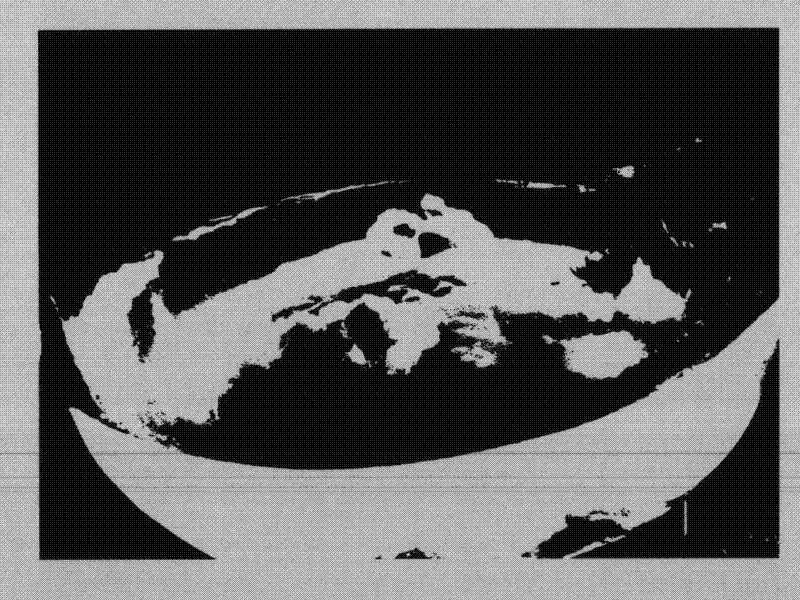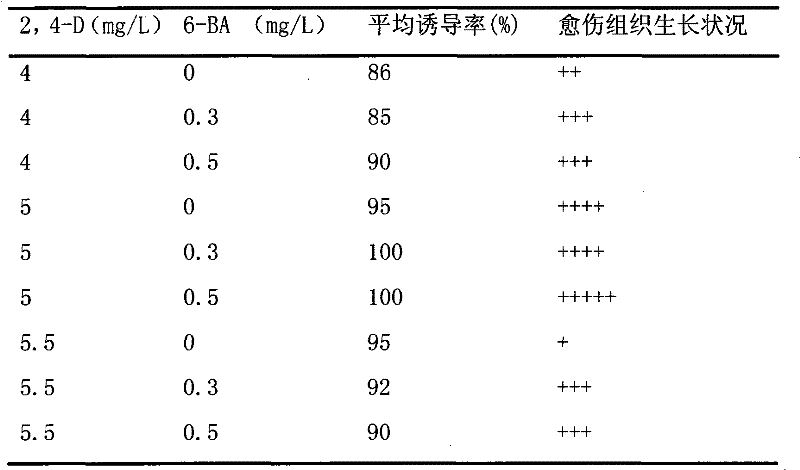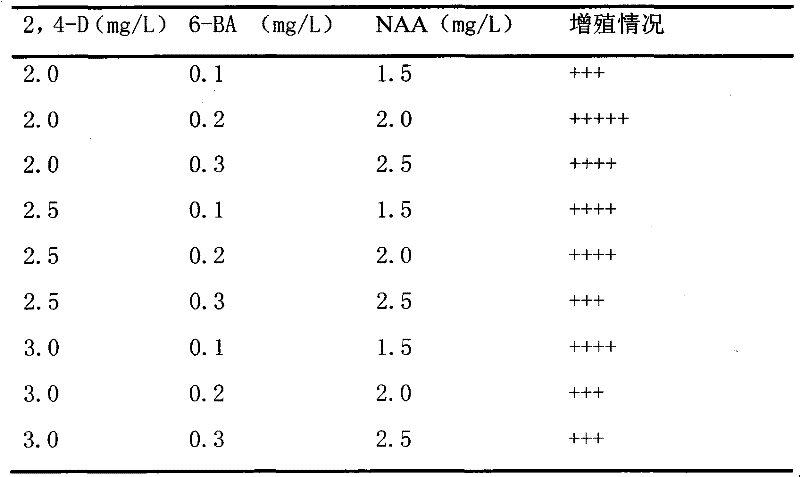Induction method of rosa chinensis receptacle callus tissues
A callus and torus technology, applied in the field of callus induction of rose torus, can solve the problems of low induction rate, difficult callus induction, poor callus quality, etc.
- Summary
- Abstract
- Description
- Claims
- Application Information
AI Technical Summary
Problems solved by technology
Method used
Image
Examples
Embodiment 1
[0017] The selection and disinfection of embodiment 1 receptacle explant
[0018] From April to October, select Chinese rose buds with a diameter of 0.4-0.6 cm in the field that are ready to bud, pretreat them in a refrigerator at 4°C for 1-2 days, rinse them with running water for 1-2 hours, and place the buds in 70% ethanol for 30 seconds on a super-clean workbench , then transferred to 0.1% HgCl 2 In the solution for 8 minutes, rinse with sterile water 3 to 4 times, peel off the calyx, petals, stamen group and pistil group, remove the receptacle and cut into 4 pieces for later use.
Embodiment 2
[0019] Example 2: Effects of different concentrations of 2,4-D and 6-BA combinations on callus induction in starter culture
[0020] The aseptic receptacles of rose were inoculated on the MS starting medium containing different concentrations of 6-BA (0, 0.3, 0.5mg / L) and 2,4-D (4.5, 5, 5.5mg / L) combinations. Culture in dark for 7 days, and then switch to low light (800-1000Lx) for culture. After 30 days, the effects of exogenous hormones on callus induction were compared. The results are shown in Table 1: There are significant differences in the induction effects of each starting medium, among which the induction rate of medium MS+2, 4-D 5.0mg / L+6-BA 0.5mg / L is the highest, and the induction quality is the highest. Well, the callus is yellow-green, loosely granular (eg figure 1 shown), and gradually increased with the prolongation of culture time, and can be cultured to 50 days. Therefore, the most suitable starting medium for rose callus induction is MS+2, 4-D 5.0 mg / L+...
Embodiment 3
[0023] Example 3: Effects of Different Concentrations of 2,4-D and 6-BA Combination on Callus Proliferation
[0024] The yellow-green, loose granular initial callus induced on the optimal starting medium (MS+2, 4-D 5.0mg / L+6-BA 0.5mg / L) was transferred to the proliferation medium (MS +2,4-D 2.0~3.0mg / L+6-BA 0.1~0.3mg / L+NAA 1.5~2.5mg / L) for proliferation culture, the callus can proliferate rapidly, among which the proliferation medium MS+ 2,4-D 2.0mg / L+6-BA 0.2mg / L+NAA 2.0mg / L had the best proliferation effect (Table 2).
[0025] Table 2 Effects of different concentrations of 2, 4-D and 6-BA on callus proliferation
[0026]
PUM
 Login to View More
Login to View More Abstract
Description
Claims
Application Information
 Login to View More
Login to View More - R&D
- Intellectual Property
- Life Sciences
- Materials
- Tech Scout
- Unparalleled Data Quality
- Higher Quality Content
- 60% Fewer Hallucinations
Browse by: Latest US Patents, China's latest patents, Technical Efficacy Thesaurus, Application Domain, Technology Topic, Popular Technical Reports.
© 2025 PatSnap. All rights reserved.Legal|Privacy policy|Modern Slavery Act Transparency Statement|Sitemap|About US| Contact US: help@patsnap.com



